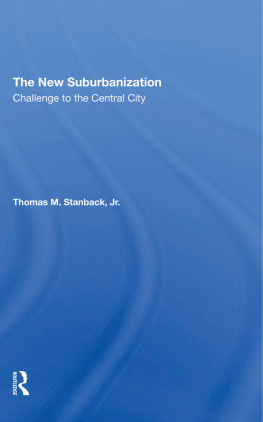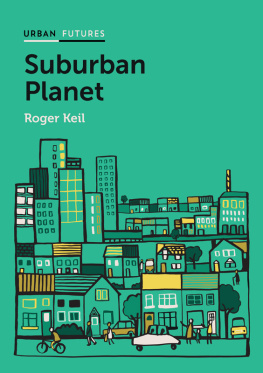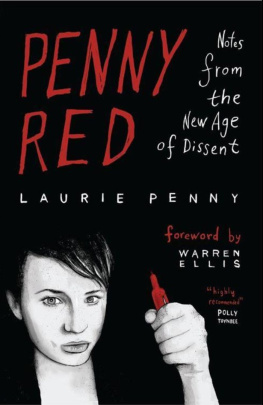The New Suburbanization
The Eisenhower Center for the Conservation of Human Resources Studies in the New Economy
The New Suburbanization: Challenge to the Central City , Thomas M. Stanback, Jr.
Employee Training and U.S. Competitiveness: Lessons for the 1990s, Lauren Benton, Thomas Bailey, Thierry Noyelle, and Thomas M. Stanback, Jr.
Skills, Wages, and Productivity in the Service Sector, edited by Thierry Noyelle
Does Job Training Work? The Clients Speak Out, Eli Ginzberg, Terry Williams, and Anna Dutka
New York's Financial Markets: The Challenges of Globalization, edited by Thierry Noyelle
Immigrant and Native Workers: Contrasts and Competition, Thomas R. Bailey
Beyond Industrial Dualism: Market and Job Segmentation in the New Economy, Thierry Noyelle
Computerization and the Transformation of Employment: Government, Hospitals, and Universities, Thomas M. Stanback, Jr.
Technology and Employment: Concepts and Clarifications, Eli Ginzberg, Thierry Noyelle, and Thomas M. Stanback, Jr.
The New Suburbanization
Challenge to the Central City
Thomas M. Stanback, Jr.
First published 1991 by Westview Press
Published 2019 by Routledge
52 Vanderbilt Avenue, New York, NY 10017
2 Park Square, Milton Park, Abingdon, Oxon OX14 4RN
Routledge is an imprint of the Taylor & Francis Group, an informa business
Copyright 1991 by The Eisenhower Center for the Conservation of Human Resources, Columbia University
All rights reserved. No part of this book may be reprinted or reproduced or utilised in any form or by any electronic, mechanical, or other means, now known or hereafter invented, including photocopying and recording, or in any information storage or retrieval system, without permission in writing from the publishers.
Notice:
Product or corporate names may be trademarks or registered trademarks, and are used only for identification and explanation without intent to infringe.
Library of Congress Cataloging-in-Publication Data
Stanback, Thomas M., Jr.
The new suburbanization: challenge to the central city / by
Thomas M. Stanback, Jr.
p. cm. (The Eisenhower Center for the Conservation of
Human Resources studies in the new economy)
Includes index.
ISBN 0-8133-8051-0
1. SuburbsUnited States. 2. SuburbsEconomic aspectsUnited
States. 3. Metropolitan areasUnited States. 4. Inner cities
United States. I. Title. II. Series.
HT352.U6S69 1991
307.74'0973dc20 90-39827 CIP
ISBN 13: 978-0-367-29442-7 (hbk)
I was very pleased when my long-term research associate and friend, Thomas Stanback, Jr., asked me to write a foreword for this book. During the more than quarter-century of our research association, I have learned a great deal about the urban scene from the books that Stanback has authored. Suburbanization and the City (1976), which he wrote in association with Richard Knight, served as a major eye-opener in enhancing my understanding of the symbiosis between the central business district (CBD) of our major metropolises and the bedroom communities where many of their workers slept.
Now, fifteen years latera relatively short period of time in the history of even dynamic capitalistic economiesStanback has taken a fresh look at fourteen metropolitan centers, including the four largest New York, Chicago, Los Angeles, and Philadelphiaand has come up with some strikingly new and different findings and recommendations from those contained in his earlier study.
Stanback has not only been a pioneering student of urbanization but has also made important contributions to assessing the accelerating shift of the U.S. economy from goods to services. He has paid particular attention to the critical importance of business services in usurping the central role in the recent revitalization of so many of our larger central business districts in our older cities. The present volume builds on his dual areas of expertise, as shown in his earlier studies of suburbanization and those focused on the growing role of business services in the reshaping of the U.S. economy.
What are the important new findings contained in Stanback's neat and closely argued monograph that should be of interest and concern to all of usemployers, politicians, planners, researchers, workers, and job seekers?
The old symbiosis can no longer be taken for granted. It is not necessarily true that as the suburbs continue to gain population, the economic exchange between suburbanites commuting to the city for work and the continuing well-being of the central city will be assured. The "new" in The New Suburbanization refers to the fact that many, though not all, of the suburbs of our major cities have begun to enjoy the benefits of agglomerationbenefits formerly reserved only for cities and accordingly the industrial composition, employment, and earnings profiles of the new suburbs may no longer be constrained by overemphasis on manufacturing, retailing, and other consumer services.
The new suburban agglomerations have been able to attract a wide range of business servicesfrom finance, insurance, and real estate (FIRE) to research laboratories and often including hotel complexes, theaters, and convention sitesthat make these suburban complexes direct competitors to CBDs. And these complexes have something very powerful going for themthe preference of more and more Americans to relocate away from the central city. But Stanback, having introduced this major revision to his earlier view of the symbiosis between city and suburb, is quick to add that not everything favors the new suburbs. Employers confront a tight labor market, particularly of young people reaching working age. The earnings profile remains unfavorable in the suburbs, across most industrial fields. Commuting within the suburban areas is increasingly gridlocked. Housing costs in many suburban areas are problematic for all except the more affluent members of the middle class.
But Stanback warns that these present and possibly worsening disabilities confronting the suburbs are no basis for satisfaction for those in most inner-cities, with their disproportionate numbers of low-income, less-educated populations; relatively low employment/population ratios; and a sharp divide between those who have jobs with an average salary of $25,000 and those who hold jobs with annual earnings of around $9,000.
Stanback is disturbed by the growing gap between the more successful and the less successful jobholders resident in the city. But his major concern is with poorly educated, minority youth, most of whom are not in the job market and who have little prospect of gaining entrance into any of the more demanding business service jobs that have come to constitute the expanding sector of the city's economy.
These urban youth cannot readily access the available unskilled jobs in the suburbs because of lack of private or public transportation. There is little prospect of the suburbs providing affordable housing for low-income persons. Hence it is essential for the city's future as well as for the future of these youth that efforts to improve their educational preparation be redoubled. The city needs more qualified workers, witness the continuing large flows of commuters who travel long distances every day to the CBDs. But the jobs in the CBDs increasingly require young people who have acquired a high school diploma, preferably a community college degree. High school dropouts and the functionally illiterate cannot handle these jobs.


